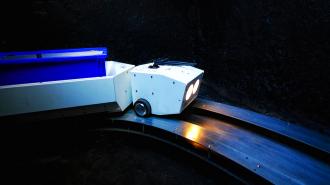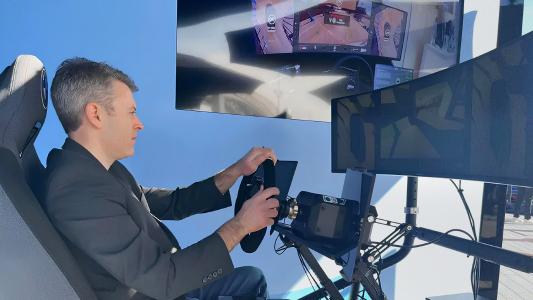This article is an installment of Future Explored, a weekly guide to world-changing technology. You can get stories like this one straight to your inbox every Thursday morning by subscribing here.
On-demand delivery services exploded in popularity during the pandemic, as consumers decided they would prefer to order their groceries, takeout, and other goods via apps and have them dropped at their doorsteps, rather than venturing outside or facing closed outlet stores.
The pandemic may be over, but demand for fast home delivery has continued to rise, and this is causing sellers to rethink how they approach the “last mile” of a delivery.
Last-mile delivery often contribute to road congestion, noise pollution, and carbon emissions.
Today, last-mile delivery typically involves whatever you ordered being loaded into a car or truck, driven to your home, and placed on your porch by a person.
Because this approach is beholden to roads, any problems on them — traffic, construction, accidents, etc. — can delay when your order arrives, and enough angry customers leaving angry reviews online can cause a business to go under.
Delivery cars and trucks also contribute to road congestion and noise pollution, as well as air pollution and carbon emissions (if the vehicle is gas-powered, which it likely is). The need to pay drivers can also mean large fees for customers.
To keep costs down, while ensuring orders arrive quickly and have as little negative impact on the environment as possible, some retailers and restaurants are now exploring the use of autonomous sidewalk robots, aerial drones, and even underground tunnels for last-mile delivery.
Sidewalk robots
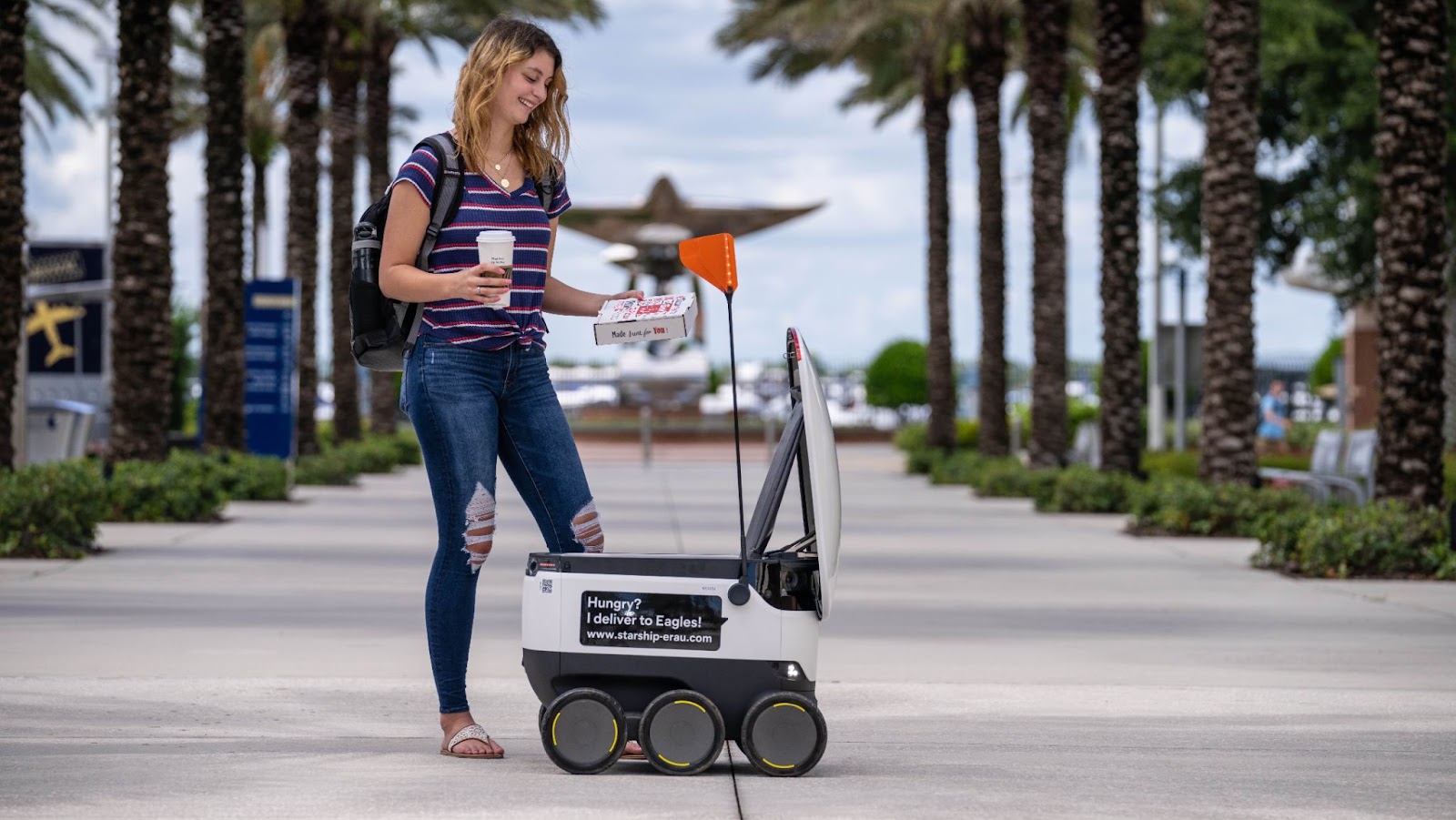
The idea: Instead of loading small orders into cars for last-mile deliveries, we can place them inside autonomous robots. These bots can then carry the goods to a customer for unloading before picking up their next order.
Delivery robots are typically battery-powered and designed to operate on sidewalks, meaning they don’t contribute to emissions or road traffic. While some require a remote operator or supervisor, others are autonomous, which could lower delivery fees.
The latest: After years of small pilot tests, we’re finally starting to see delivery robots roll out in larger numbers.
In 2023, San Francisco-based Starship Technologies grew its fleet of zero-emission delivery robots to more than 2,000 — its bots have now completed more than 5 million deliveries worldwide.
“Our goal is actually to take 5% of food deliveries off the road in the next five years.”
Ali Kashani
Meanwhile, autonomous delivery startup Serve Robotics, which currently operates a fleet of 100 delivery bots, inked a deal with Uber Eats in May 2023 to deploy 2,000 of its robots in multiple US markets over the next few years. Those bots can carry loads of up to 50 pounds.
“Our goal is actually to take 5% of food deliveries off the road in the next five years,” co-founder and CEO Ali Kashani told Freethink in 2022. “That would be about 100,000 vehicles just in the US.”
The limitations: While you can ask a delivery driver to just leave your order on the porch, you’ll probably need to be available to take your order from a delivery robot, so they might not be the best option for people who have trouble interacting with technology. (Bots may be able to kick your food out themselves some day, but most cannot today.)
The bots can only operate along certain routes — e.g., ones with ample curb ramps and (usually) no stairs — and have the potential to get into accidents with other vehicles or pedestrians. There’s also a small chance the robot will be attacked and pillaged before it reaches you.
Aerial drones
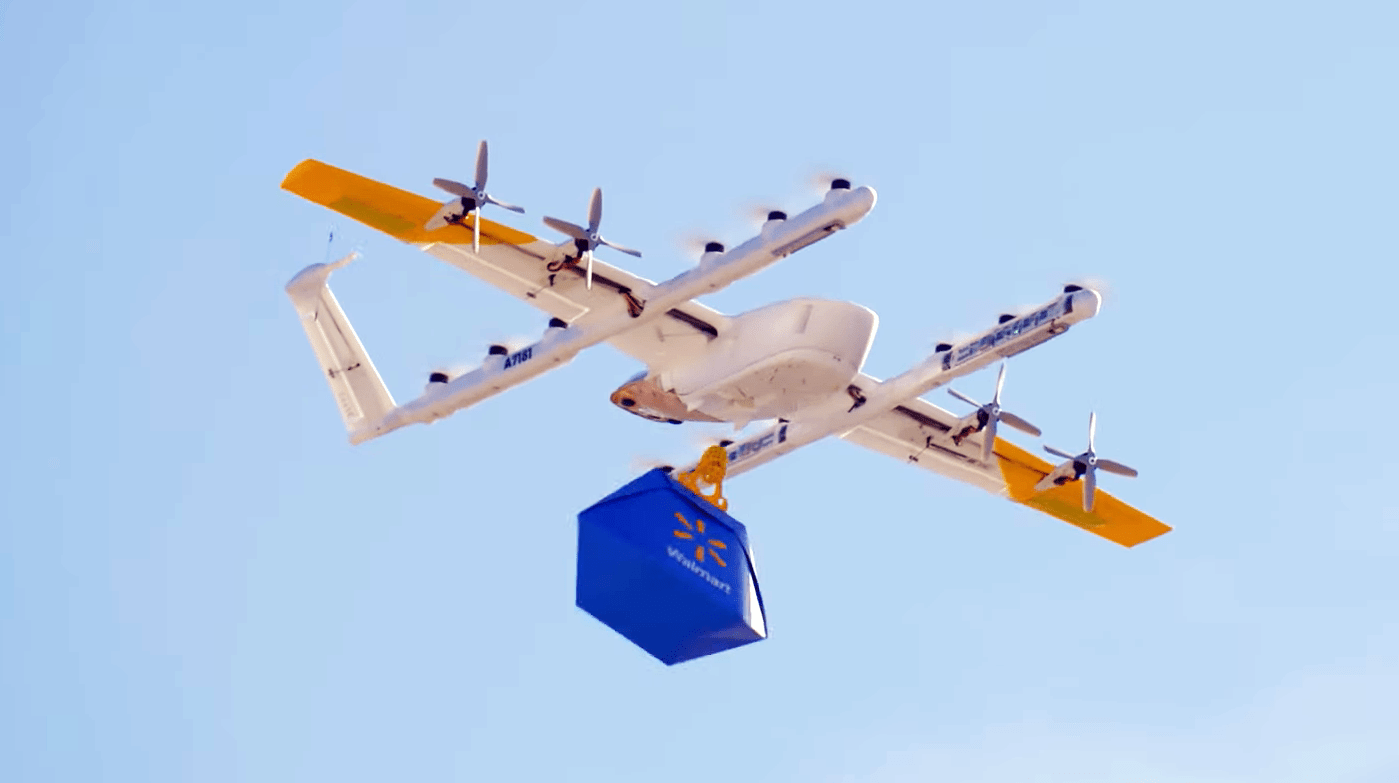
The idea: One way to avoid having goods stolen during an autonomous delivery: put them inside a drone.
In addition to being more resilient against robberies than ground robots, delivery drones aren’t beholden to roads or sidewalks. They can take shorter routes and don’t have to worry about being held up by congestion or construction, which can lead to faster deliveries.
Delivery drones are typically battery-powered, so emissions aren’t an issue, and because they usually drop their packages by parachute or cable right into your yard, you don’t have to interact with them or even be available when a delivery is made.
The latest: After nearly a decade of development, Amazon finally launched its drone delivery service, Prime Air, in two US cities in 2022, and it plans to launch in three more cities in 2024 (one each in Italy, the UK, and the US).
Walmart, meanwhile, has completed more than 10,000 drone deliveries with its partners since launching its service in 2021. It now offers drone deliveries from stores in seven states, and customers can expect their goods to arrive within 30 minutes of ordering.
“We live in an era of instant gratification … and drone delivery has risen to the occasion.”
Yariv Bash
Several drone delivery companies, including DroneUp, Zipline, and Flytrex, have teamed up with restaurants to deliver food orders, too — Chick-Fil-A, Jersey Mike’s, and Little Caesars are among the restaurants to test the last-mile delivery alternative.
“We live in an era of instant gratification, where consumers want to get their food or goods faster, more reliably, more economically, and more sustainably — and drone delivery has risen to the occasion,” said Yariv Bash, CEO and cofounder of Flytrex, in January 2023.
The limitations: Delivery drones have strict size limitations — Walmart can only handle orders weighing up to 10 pounds, for example — meaning they won’t eliminate the need for traditional delivery drivers for larger orders. They’re also expensive, so they’ll probably be reserved for higher value deliveries initially.
Drones accidents can cause serious damage to people or property, so the aircraft are strictly regulated by the FAA. While the agency now allows a handful of delivery companies to fly them beyond an operator’s line of sight, regulatory red tape could stymie the use of drones for last-mile delivery, at least in the immediate future.
Underground tunnels
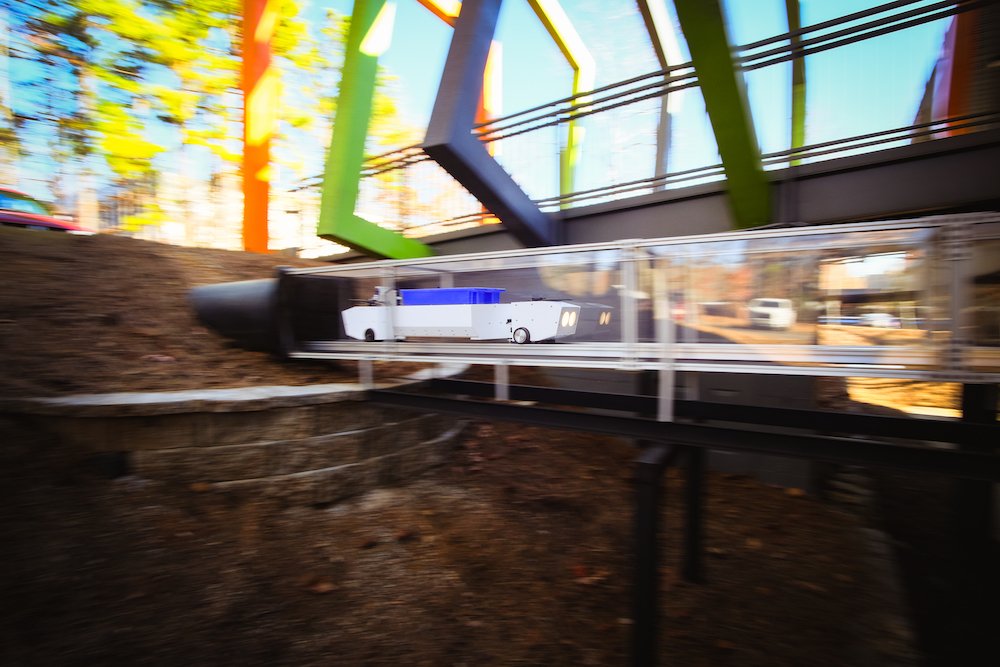
The idea: Instead of delivering goods over sidewalks or airspace, one startup — Pipedream Labs — thinks we should be using underground tunnels for last-mile delivery. Autonomous electric robots can then carry goods from sellers to consumers along tracks in the tunnels, like tiny train cars.
“The current method for delivering is a car on a road,” Canon Reeves, CTO and co-founder of Pipedream, told Freethink’s Hard Reset. “We want to do better than that, and we think that moving delivery to underground invisible pipes is a faster, cheaper, and safer method for delivery.”
The latest: On December 14, Pipedream launched its first installation in Peachtree Corners, a smart city in the Atlanta metro region. The underground tunnel is nearly a mile long and connects a busy shopping center to the Curiosity Lab, an innovation center and “living lab” for tech companies.
Five days a week during peak lunch hours, Curiosity Lab members can order food or other goods from select restaurants and retailers at the shopping center. Their order, which can weigh up to 40 pounds, is then loaded into a tote at an above ground “portal.”
“We flipped the problem of last-mile delivery on its head.”
Canon Reeves
Once the tote is lowered into a Pipedream robot, it travels along the track at speeds up to 40 mph. A few minutes later, it’s lifted into a drawer at the Curiosity Lab for retrieval.
“By bringing the delivery system underground and directly to the customer, Pipedream is showcasing the future of logistics technology that will not only bring added convenience to our residents and businesses but also reduce traffic, noise, and emissions from delivery vehicles on our roads,” said Brandon Branham, assistant city manager and CTO of Peachtree Corners.
The limitations: Pipedream’s system doesn’t work without the pipes, so the biggest challenge facing the startup is excavating and installing them. To make that happen, it needs to work with local governments and utility companies on a case-by-case basis.
The ultimate goal is having these pipes travel directly to individual houses, which sounds crazy, but we already do that for water and other utilities. (Actually operating such a vast and complex system of pipes is another matter.) For now, though, Pipedream is focusing on ensuring its system is capable of being integrated into any community that wants it.
“We flipped the problem of last-mile delivery on its head,” Reeves told Freethink. “Most other modalities are trying to create a robot that can adapt to any environment. We’re doing the opposite. We’re trying to create an environment and adapt that to any city.”
We’d love to hear from you! If you have a comment about this article or if you have a tip for a future Freethink story, please email us at [email protected].
